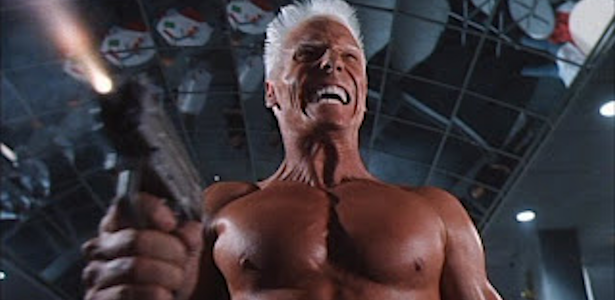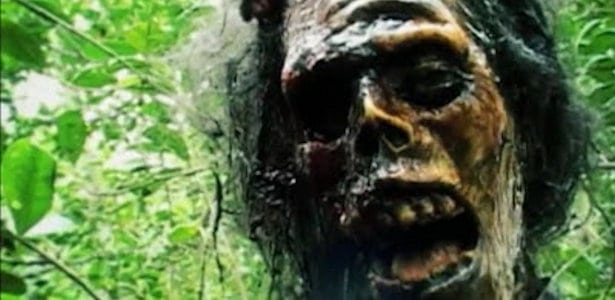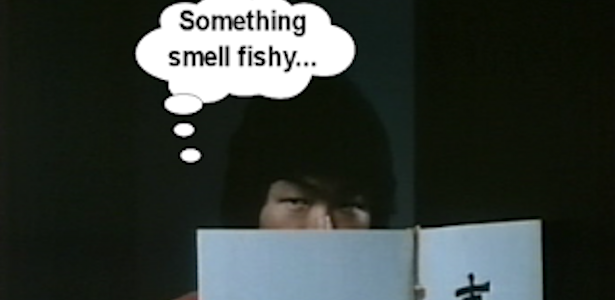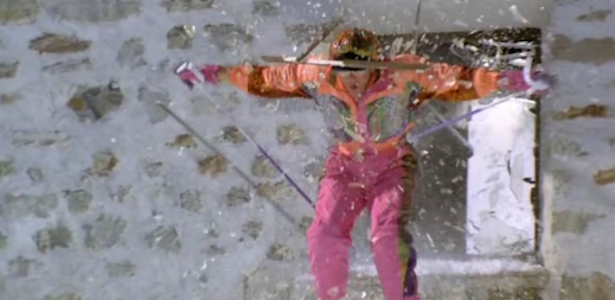Full disclosure right off the bat – John Carpenter is my favorite director of all-time. His run from 1974 – 1988 is unparalleled in my eyes by any genre filmmaker and it was a true shame when he died in that bus accident the day before he started filming MEMOIRS OF AN INVISIBLE MAN (that’s my story and I’m sticking to it). Anyway, that decade plus of dominance gave us his remake of THE THING (1982), which is now considered a modern classic. The film is the perfect combination of action, horror, sci-fi and machismo. It is also proof positive that a remake can be as good (hell, even better) than the original.
With Carpenter’s filmography from that time period getting remake raped (ASSAULT ON PRECINCT 13, HALLOWEEN, and THE FOG actually getting made; talk of ESCAPE FROM NEW YORK, PRINCE OF DARKNESS and THEY LIVE remakes still alive), it seemed like only a matter of time before his sci-fi classic would be dusted off by some braid dead bean counter to be exploited. Initially, plans were announced for Frank Darabont to produce a 4-hour miniseries sequel in 2005 titled RETURN OF THE THING. Scripted by David Leslie Johnson, the direct sequel’s screenplay got good reviews, but never materialized. In early 2009, Universal Studios announced that the producers of the DAWN OF THE DEAD remake would be handling a new version of THE THING. Oh, crap. But in a strange twist, they opted to do a prequel to Carpenter’s film rather than remake it. Okay, they just bought some much needed respect from me.
A lot of confusion has surfaced about this film in recent months. The filmmakers were adamant that they were paying homage to Carpenter’s film (to remake it would “be like painting eyebrows on the Mona Lisa” said producer Eric Newman) with their prequel, but the trailers revealed more than just some casual compliments to Carpenter’s work. Hell, there were identical shots in there. So what is this thing? Is it a prequel? Is it a remake? A premake? And, most important, is it a good thing or a bad thing? It actually ends up being a little bit of both. Afraid to truly make waves, the producers tried to have their cake and remake it too. The first half hour or so this THE THING is entirely original stuff (if I was grumpy, I could complain about the base looking exactly the same). However, once the alien escapes and begins attacking folks, we see some eerily familiar ground. We have nearly the exact same autopsy scene, a cell assimilation explanation, a “testing who is human” scene, a Blair is locked in the shed bit, an outdoor body bonfire (which looks nearly identical), and an ill victim suddenly surprising his caregivers. Screenwriter Eric Heisserer got extremely lazy here. Helping him in the Xerox-process is debuting helmer Matthijs van Heijningen Jr., who goes so far as to mimic Carpenter’s shots (watch the crane up during the autopsy scene). How fitting is it that Carpenter’s film about creating perfect imitations finds itself confronted by one in the guise of a prequel. Sadly, that isn’t the only source material being copied as the film’s last 15 minutes strives to give us some heroic Ripley scenes from the first two ALIEN films as Kate runs around inside the big alien spaceship.
To quote classic Carpenter CHRISTINE villain Buddy Repperton, “You fuckin’ liar!” Whether they were just paying lip service to the fan base of Carpenter’s movie or Newman just got his numbers mixed up, the effects are my biggest gripe with the new THE THING (update: see video below). For starters, the majority of them are done with computer imaging and they look terrible. It is just a busy bile burst of CGI that fills the screen. It is really sad that real latex effects in a film nearly 30 years old outshine what is supposed to be cutting edge technology. Second and perhaps more importantly is that the alien creations all seem to mirror the work of the 1982 film’s creator and designer, Rob Bottin. The filmmakers had absolutely free reign here in terms of their design, but nearly every transformation recalls something from Carpenter’s earlier film. Most embarrassing is the end monster that recalls the Blair-monster almost tendril by tendril. Even the thing in its alien form is derivative as it reminded me of the Arachnids from STARSHIP TROOPERS (1997).
Another annoying aspect to this film is the female lead character. Now there was a lot of stink about putting a female in this setting and, honestly, that didn’t bother me. Carpenter’s film will always have its all-male cast and you can’t change that. What is troublesome about Kate is that screenwriter Heisserer has written her as the doubting know-it-all. I lost count of the number of times she said, “Do you really think that is a good idea?” She knows from the get-go that things are off and it is pretty frustrating. One of the best things about Carpenter’s THE THING is the exchange where Kurt Russell’s MacReady says, “How the hell should I know” when asked what the alien wants. The Kate character is so overstated that she not only knows what the thing wants, but probably knows who it is going to vote for when it reaches America (the thing is totally a Reagan supporter).
One of my biggest fears when it was announced that Universal was going to do a prequel to THE THING was that they would screw it up. In a sense, they didn’t; mostly because they followed the path of the Carpenter film so closely. While I think it is a shame that this film couldn’t have been more original, I am still thankful that I got a prequel rather than a full blown remake with someone like Jason Statham pretending to be Kurt Russell. There were some nice nods to Carpenter’s film and the ending was a great way to tie the two films together. But what does it say about your film when the most thrilling moment for me is that ending? Despite all my bitching in the previous paragraphs, I will still have to admit that seeing the story before the story was thrilling for a die-hard THE THING fan like me. Now if you’ll excuse me, I’m off as I’d rather not spend the rest of this evening TIED TO THIS FUCKING COMPUTER CHAIR!
UPDATE (in Robert Stack voice): Tom pointed me to this video showcasing the practical FX that the production initially used before the execs decided it was best to cover them in bad CGI. A classic case of Hollywooditis and whatcouldbeen.
With Carpenter’s filmography from that time period getting remake raped (ASSAULT ON PRECINCT 13, HALLOWEEN, and THE FOG actually getting made; talk of ESCAPE FROM NEW YORK, PRINCE OF DARKNESS and THEY LIVE remakes still alive), it seemed like only a matter of time before his sci-fi classic would be dusted off by some braid dead bean counter to be exploited. Initially, plans were announced for Frank Darabont to produce a 4-hour miniseries sequel in 2005 titled RETURN OF THE THING. Scripted by David Leslie Johnson, the direct sequel’s screenplay got good reviews, but never materialized. In early 2009, Universal Studios announced that the producers of the DAWN OF THE DEAD remake would be handling a new version of THE THING. Oh, crap. But in a strange twist, they opted to do a prequel to Carpenter’s film rather than remake it. Okay, they just bought some much needed respect from me.
Set in the same winter of 1982, THE THING prequel opens with three Norwegians in a snow mobile tracking a strange signal under the ice, which gives way and offers them a glimpse at just what was sending out that signal. Cut to paleontologist Kate Lloyd (Mary Elizabeth Winstead) in her lab examining a frozen fossil. She is recruited by Norwegian scientist Sander Halversen (Ulrich Thomsen) and his assistant (and her possible old flame) Adam Goodman (Eric Christian Olsen) to head to Antarctica to help extract something from the ice. All she is told is that they have discovered a large structure and a specimen. Flown to the isolated Norwegian base by American Sam Carter (Joel Edgerton) and his two co-pilots, Kate and the scientific team are quickly whisked away to the discovery site where Edvard Wolner (Trond Espen Seim) shows them what all the fuss is about – a huge spaceship and its sole inhabitant encased in ice. The crew carves the solidified space invader out and, once back at the station, Halversen orders a tissue sample to be taken. Bad news as it causes the thing to thaw out and you can guess what happens next.
“If I was an imitation, a perfect imitation,
how would you know it was really me?”
– Childs (Keith David) in THE THING (1982)
A lot of confusion has surfaced about this film in recent months. The filmmakers were adamant that they were paying homage to Carpenter’s film (to remake it would “be like painting eyebrows on the Mona Lisa” said producer Eric Newman) with their prequel, but the trailers revealed more than just some casual compliments to Carpenter’s work. Hell, there were identical shots in there. So what is this thing? Is it a prequel? Is it a remake? A premake? And, most important, is it a good thing or a bad thing? It actually ends up being a little bit of both. Afraid to truly make waves, the producers tried to have their cake and remake it too. The first half hour or so this THE THING is entirely original stuff (if I was grumpy, I could complain about the base looking exactly the same). However, once the alien escapes and begins attacking folks, we see some eerily familiar ground. We have nearly the exact same autopsy scene, a cell assimilation explanation, a “testing who is human” scene, a Blair is locked in the shed bit, an outdoor body bonfire (which looks nearly identical), and an ill victim suddenly surprising his caregivers. Screenwriter Eric Heisserer got extremely lazy here. Helping him in the Xerox-process is debuting helmer Matthijs van Heijningen Jr., who goes so far as to mimic Carpenter’s shots (watch the crane up during the autopsy scene). How fitting is it that Carpenter’s film about creating perfect imitations finds itself confronted by one in the guise of a prequel. Sadly, that isn’t the only source material being copied as the film’s last 15 minutes strives to give us some heroic Ripley scenes from the first two ALIEN films as Kate runs around inside the big alien spaceship.
“Producer Newman said that the balance
is about 80/20 practical to CGI”
-AICN set report on THE THING
To quote classic Carpenter CHRISTINE villain Buddy Repperton, “You fuckin’ liar!” Whether they were just paying lip service to the fan base of Carpenter’s movie or Newman just got his numbers mixed up, the effects are my biggest gripe with the new THE THING (update: see video below). For starters, the majority of them are done with computer imaging and they look terrible. It is just a busy bile burst of CGI that fills the screen. It is really sad that real latex effects in a film nearly 30 years old outshine what is supposed to be cutting edge technology. Second and perhaps more importantly is that the alien creations all seem to mirror the work of the 1982 film’s creator and designer, Rob Bottin. The filmmakers had absolutely free reign here in terms of their design, but nearly every transformation recalls something from Carpenter’s earlier film. Most embarrassing is the end monster that recalls the Blair-monster almost tendril by tendril. Even the thing in its alien form is derivative as it reminded me of the Arachnids from STARSHIP TROOPERS (1997).
Another annoying aspect to this film is the female lead character. Now there was a lot of stink about putting a female in this setting and, honestly, that didn’t bother me. Carpenter’s film will always have its all-male cast and you can’t change that. What is troublesome about Kate is that screenwriter Heisserer has written her as the doubting know-it-all. I lost count of the number of times she said, “Do you really think that is a good idea?” She knows from the get-go that things are off and it is pretty frustrating. One of the best things about Carpenter’s THE THING is the exchange where Kurt Russell’s MacReady says, “How the hell should I know” when asked what the alien wants. The Kate character is so overstated that she not only knows what the thing wants, but probably knows who it is going to vote for when it reaches America (the thing is totally a Reagan supporter).
“Now I'm gonna show you what I already know.”
– MacReady (Kurt Russell) in THE THING (1982)
One of my biggest fears when it was announced that Universal was going to do a prequel to THE THING was that they would screw it up. In a sense, they didn’t; mostly because they followed the path of the Carpenter film so closely. While I think it is a shame that this film couldn’t have been more original, I am still thankful that I got a prequel rather than a full blown remake with someone like Jason Statham pretending to be Kurt Russell. There were some nice nods to Carpenter’s film and the ending was a great way to tie the two films together. But what does it say about your film when the most thrilling moment for me is that ending? Despite all my bitching in the previous paragraphs, I will still have to admit that seeing the story before the story was thrilling for a die-hard THE THING fan like me. Now if you’ll excuse me, I’m off as I’d rather not spend the rest of this evening TIED TO THIS FUCKING COMPUTER CHAIR!
UPDATE (in Robert Stack voice): Tom pointed me to this video showcasing the practical FX that the production initially used before the execs decided it was best to cover them in bad CGI. A classic case of Hollywooditis and whatcouldbeen.















































































